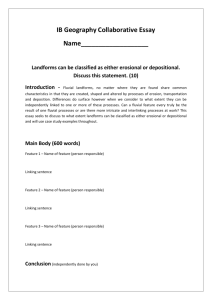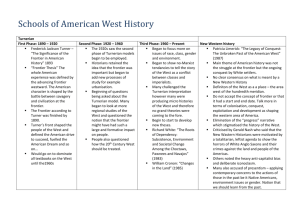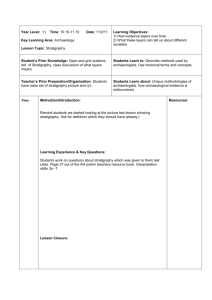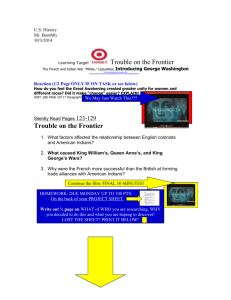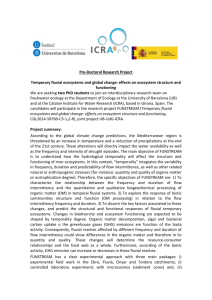MONDAY:
advertisement
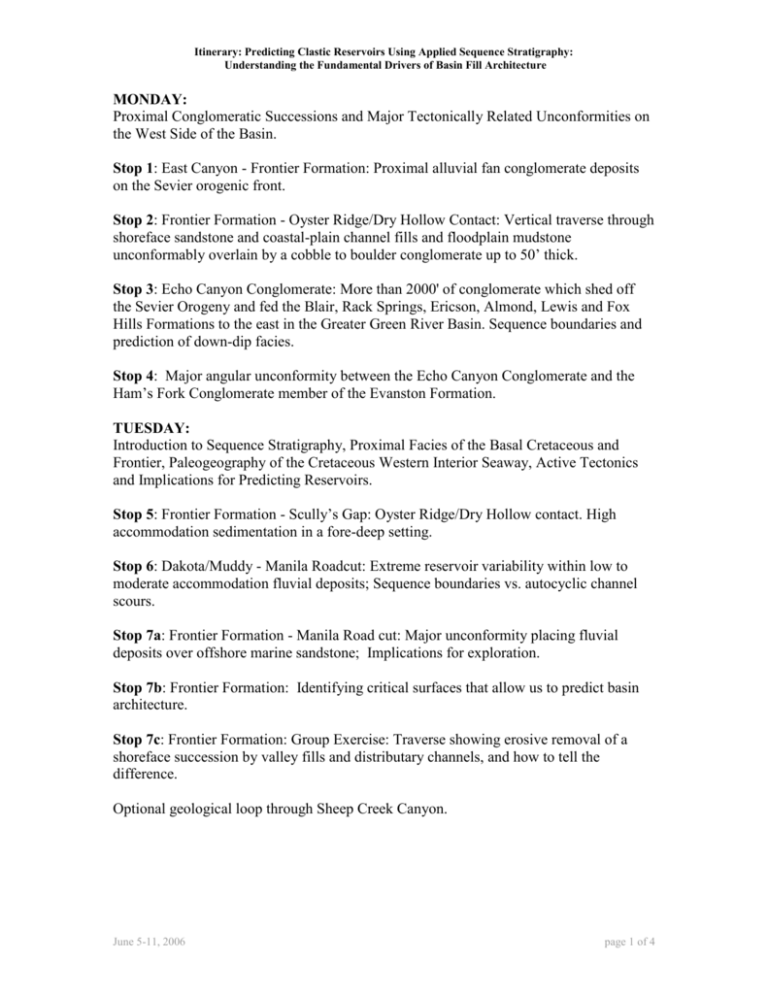
Itinerary: Predicting Clastic Reservoirs Using Applied Sequence Stratigraphy: Understanding the Fundamental Drivers of Basin Fill Architecture MONDAY: Proximal Conglomeratic Successions and Major Tectonically Related Unconformities on the West Side of the Basin. Stop 1: East Canyon - Frontier Formation: Proximal alluvial fan conglomerate deposits on the Sevier orogenic front. Stop 2: Frontier Formation - Oyster Ridge/Dry Hollow Contact: Vertical traverse through shoreface sandstone and coastal-plain channel fills and floodplain mudstone unconformably overlain by a cobble to boulder conglomerate up to 50’ thick. Stop 3: Echo Canyon Conglomerate: More than 2000' of conglomerate which shed off the Sevier Orogeny and fed the Blair, Rack Springs, Ericson, Almond, Lewis and Fox Hills Formations to the east in the Greater Green River Basin. Sequence boundaries and prediction of down-dip facies. Stop 4: Major angular unconformity between the Echo Canyon Conglomerate and the Ham’s Fork Conglomerate member of the Evanston Formation. TUESDAY: Introduction to Sequence Stratigraphy, Proximal Facies of the Basal Cretaceous and Frontier, Paleogeography of the Cretaceous Western Interior Seaway, Active Tectonics and Implications for Predicting Reservoirs. Stop 5: Frontier Formation - Scully’s Gap: Oyster Ridge/Dry Hollow contact. High accommodation sedimentation in a fore-deep setting. Stop 6: Dakota/Muddy - Manila Roadcut: Extreme reservoir variability within low to moderate accommodation fluvial deposits; Sequence boundaries vs. autocyclic channel scours. Stop 7a: Frontier Formation - Manila Road cut: Major unconformity placing fluvial deposits over offshore marine sandstone; Implications for exploration. Stop 7b: Frontier Formation: Identifying critical surfaces that allow us to predict basin architecture. Stop 7c: Frontier Formation: Group Exercise: Traverse showing erosive removal of a shoreface succession by valley fills and distributary channels, and how to tell the difference. Optional geological loop through Sheep Creek Canyon. June 5-11, 2006 page 1 of 4 Itinerary: Predicting Clastic Reservoirs Using Applied Sequence Stratigraphy: Understanding the Fundamental Drivers of Basin Fill Architecture WEDNESDAY: Eolian Depositional Systems and Sequence Stratigraphic Concepts, Exploitation and Exploration Applications. Stop 8: Josey Morris Ranch - Hog Canyon - Weber: The Weber in this area is nearly 900' thick and is composed of stacked dune and marine-affected dolomite interdune deposits. We will study gross stratification and the general range of sedimentary structures common in eolian systems, as well as their cyclic nature. Stop 9: Petroglyphs: Lizards, pipe layers, “spacemen” etc... Stop 10: Red Wash Creek - Navajo (Nugget) and Entrada Systems: We will look at these systems to compare the effects of water and water tables in eolian systems. How wet or dry the desert was dramatically affects eolian reservoirs. Stop 11a: Dinosaur Quarry Museum: A “coarse-grained” channel lag (Morrison Fm.). Stop 11b: Dakota, Mowry and Frontier Formations: Note the marked thinning of the section from that at Manila. What are the similarities and differences? Stop 12: Red Fleet Reservoir - Navajo 3-D: Dune and interdune continuity, permeability barriers, predictability and the perversity of nature. Stop 13: Dutch John - Frontier Formation: Fluvial and shoreface sandstones and sequence boundary(ies) in a low accommodation setting. THURSDAY: Highstand Systems Tracts and Sequence Boundaries. Stop 14a: Overview of the Rock Springs Uplift. Lower Rock Springs Formation and Blair Formation - Crooked Canyon NE: Offshore transition, marine shale inter-beds, parasequences vs. autocyclicity. Stop 14b: Lower Rock Springs Fm. - Crooked Canyon NE: Offshore transition, shoreface, foreshore, coal, coastal plain, tidal rhythmites, transgressive surface of erosion, shoreface incision, Incised Valley Exercise. Stop 15: Lower Rock Springs Formation - Crooked Canyon: Shoreface deposits, amalgamation of shoreface; incised systems, lateral equivalents of distributaries, lagoon vs. coastal - plain, volcanic neck. Stop 16 will be a group exercise to determine sequence stratigraphic response of fluvial systems to changes in relative sea level. June 5-11, 2006 page 2 of 4 Itinerary: Predicting Clastic Reservoirs Using Applied Sequence Stratigraphy: Understanding the Fundamental Drivers of Basin Fill Architecture Stop 17: Ericson Formation: High net to gross fluvial succession in a low accommodation setting; Coarse lag, channel morphologies, discussion of sequence boundaries. Stop 17b: Upper Ericson Formation: Braid plain vs. coastal-plain. What are the relative sea-level implications? What reservoir predictions can you make? Implications of erosional surfaces - structural vs. eustatic control: Group discussion. Stop 18: Upper Almond Formation: What interpretations can be made for sequence stratigraphy and relative sea-level histories? How does this impact exploration and reservoir characteristics? FRIDAY Lowstand Systems Tracts. Stop 19: Lewis/Fox Hills/Lance Traverse - Hadsell: “Basinal” turbidites, slope (?)mudstone, shelf mudstone, prograding shoreface, coastal-plain fluvial, sequence boundaries?, and transgressive surfaces. Stop 20: Frontier Form. - Sinclair Area: Marine reworking of sequence boundaries, transgressive erosion, and shelf sandstone deposits. Stop 21: Fox Hill/Lewis - West Atlantic Rim: Group Exercise: Shelf-edge distributary system: What implications for exploration does it have? Stop 22: Lewis/Dad Sandstone: turbidite fan complex and debris flows versus turbidites; dewatering structures and other diagnostic sedimentary structures; similarities and differences relative to global deep-water systems. SATURDAY Transgressive Systems Tracts, Fluvial, Lagoonal, and Barrier Reservoir Systems. Stop 23a: Rock Springs/Ericson Contact: Sequence boundary - braid plain over coastal plain. Stop 23b: Ericson/Almond Transition: Fluvial response to transgression. Stop 24: Almond Formation - Ericson Ranch: Barrier island, lagoon, washovers, transgressive surfaces of erosion, coastal-plain deposits. Group exercise. Stop 25: Almond Formation - Ericson Ranch - North - R-8: Barrier island, washover, lagoon, amalgamation, lateral facies changes. Stop 26: Almond Formation - 430 SW - R-7: Barrier/lagoon systems, tidal channel and inlet sequence, stacked shoreface and amalgamation, transgressive lags, subtle sequence June 5-11, 2006 page 3 of 4 Itinerary: Predicting Clastic Reservoirs Using Applied Sequence Stratigraphy: Understanding the Fundamental Drivers of Basin Fill Architecture boundaries. Final team exercise: exploration using what you learned – identify the range of play opportunities up dip, down dip and along strike from this location. Final synopsis on the outcrop. June 5-11, 2006 page 4 of 4


